#1826
Text
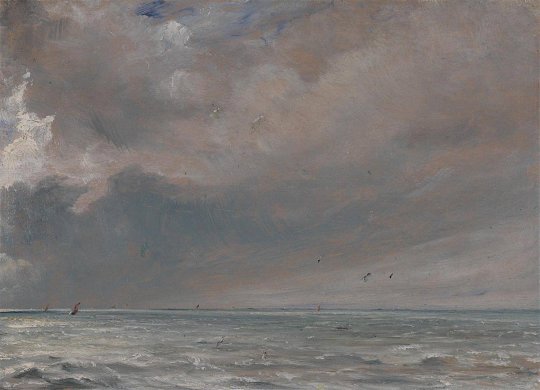
John Constable, The Sea Near Brighton, 1826
37 notes
·
View notes
Text

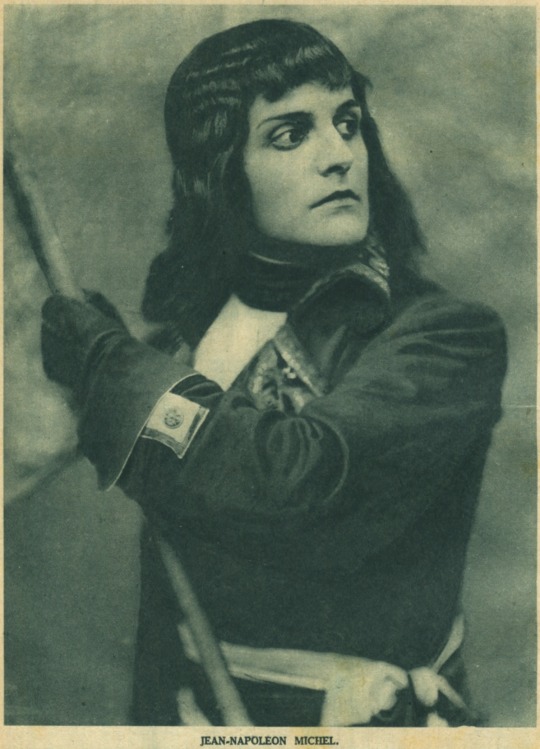
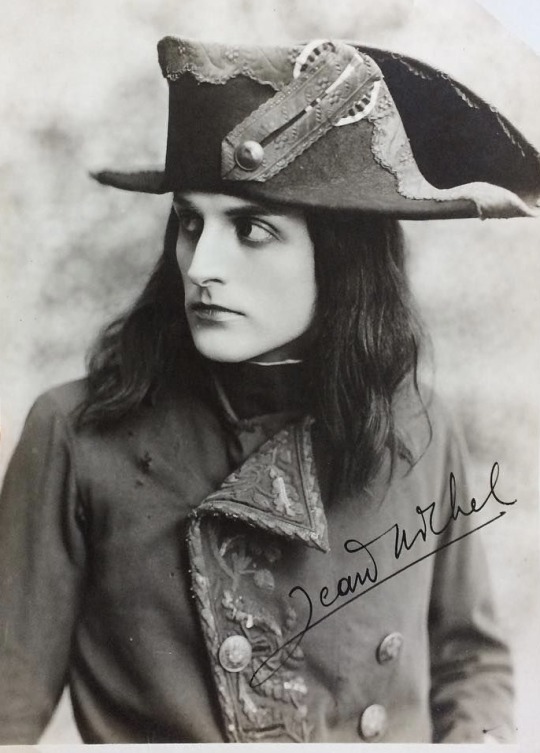
Jean-Napoléon Michel as Napoleon Bonaparte
81 notes
·
View notes
Text

Journal des Dames et des Modes, Costumes Parisiens, 5 septembre 1826, (2436): Capotes de gros de Naples bordées de tresses de paille et ornées de fleurs et d'épis. Redingotes d'organdi garnies de malines et de boutons de nacre. Collection of the Rijksmuseum, Netherlands
Two women, one seen from the back, dressed in organdy redingotes decorated with 'malines' (Mechelse lace) and mother-of-pearl buttons. 'Capotes' of 'gros de Naples' trimmed with 'tresses' of straw and decorated with flowers and spikes. Further accessories: earring, bracelets on both wrists, gloves, checkered bag, shoes. The print is part of the fashion magazine Journal des Dames et des Modes, published by Pierre de la Mésangère, Paris, 1797-1839.
#Journal des Dames et des Modes#19th century#1820s#1826#on this day#September 5#periodical#fashion#fashion plate#color#description#rijksmuseum#dress#redingote#gigot#Mésangère#devant et dos
62 notes
·
View notes
Note
Ah, Tumblr. Why would they hide my question from you🥲? Here is the rather long question that I wanted to ask.
I've been wondering about Lafayette's interactions with his in-laws—not the Noailles, but his children's. What did he think about his sons-in-law? Did they get along? How did the marriages take place, or anything related to them?
I'm currently in the very long process of writing a novel about Adrienne, now entering the French Revolution, still having a long way to go before any of the Lafayette kids get married. But my God, the French Revolution is stressful as hell to write☹️. I just want my girl to get some rest… And so, I guess I just want to skip ahead to the lighthearted part. While Adrienne’s thoughts and interactions are pretty much all in Virginie’s book, and maybe some in her sister’s memoirs, Mister Lafayette’s is a bit confusing for me because he has so much information from all different sources. (Which brings me to my next question: What book do you recommend for referencing information about Gilbert? It’s too stressful to always go from one source to another for him.😭)
The information on this blog has been immensely helpful! I would have been lost as to where to find the sources that I needed. hope you have a good day, and hold on to your historical passion! 👍☺️
Dear @daydream-247,
first of all, that sounds like a very interesting project! When you come around to publishing something, I would absolutely love to read it! And thank you for your kind word, it is always nice to hear that other people can take something away from what I post and are not annoyed by me. :-)
As to the partners of his children, La Fayette had a very good relationship with all of them. I am actually quite happy that you asked about that part of the family, since this topic is quite dear to my heart. I think there is not enough talk about that – as it is with so many things in La Fayette’s life that have nothing to do with Revolutions and America. The La Fayette’s and their family and friends were so tight nit, so intimate and loving. La Fayette – and also Adrienne, while she was still alive, loved being grand-parents and in La Fayette’s case later great-grandparents. While their children were able to go their own ways in live, they and their families always remained very close to their parents. The children’s marriages were happy ones – not without personal tragedy of course, but they all weathered the challenges thrown at them. To the best of my knowledge, there were no affairs, mistresses, and betrayals in that generation.
But enough of me being fascinated by family dynamics, lets us get to your question! La Fayette wrote on December 1, 1802 to James Madison:
I Live in an Agreable place, About forty Miles from paris. My Children are With me. Georges Has Married the daughter of Tracy whom Mr. Jefferson Has known in the Constituent Assembly and Who is One of His Warmest Admirers. My Elder daughter is the Wife of Charles La tour Maubourg the Youngest Brother of My Olmutz Companion and Has two Lovely Little Girls. My daughter in Law is Within a few Months to Encrease Our family. Georges is Now at turin Where the 11th Rgt of Huzzards Has its Quarters. Virginia, My Younger daughter, will, I think, Be Married Before Long.
“To James Madison from Lafayette, 1 December 1802,” Founders Online, National Archives, https://founders.archives.gov/documents/Madison/02-04-02-0176. [Original source: The Papers of James Madison, Secretary of State Series, vol. 4, 8 October 1802 – 15 May 1803, ed. Mary A. Hackett, J. C. A. Stagg, Jeanne Kerr Cross, Susan Holbrook Perdue, and Ellen J. Barber. Charlottesville: University Press of Virginia, 1998, pp. 166–170.] (01/25/2024)
La Fayette was right concerning Virginie. She married on April 20, 1803. She would probably have married sooner, but La Fayette slipped on the icy pavement that winter and broke his femur close to the hip bone – an injury that is no laughing matter, neither in the 21st nor in the early 19th century. The wedding was postponed, giving La Fayette time to recover.
Let us now have a closer look at the marriages and resulting families of each of Adrienne’s and La Fayette’s children. Anastasie, their oldest surviving child, was the first one to marry. She married Juste-Charles de Faÿ de la Tour-Maubourg. Charles was the younger brother of Marie-Charles-César de Faÿ, comte de la Tour-Maubourg. César was one of La Fayette’s dearest friends. Do you remember this heartbreaking letter La Fayette wrote after Adrienne’s death? That letter was addressed to César, and I have never again seen La Fayette lay his soul and emotions so open – not even in front of Washington.
Charles was for a very, very short time imprisoned as well but quickly freed. After all the prisoners of Olmütz were set free, they settled at Wittmold and were reunited with their respected families. It was there that Anastasie met – or at least fell in love with, Charles. They were married on Mai 8, 1798 in the private chapel in Wittmold by the Abbé Luchet (and oh this blasted certificate of marriage! One day, one day …) They soon started their own family, and it was here that tragedy struck. While both of their twin daughters survived the birth, one died only a few weeks later. Sadly, the little girl is often forgotten and not at all mentioned when La Fayette’s grandchildren are discussed. I will not say much about the grandchildren here in general because firstly, this post would get even longer than it already is (I am so sorry!) and secondly, I have a post in the making going through all of the grandchildren and possible some great-grandchildren – including the ones that died young or were stillborn/miscarried. I feel they should not be left out. Anastasie lost at least two, if not more children and Georges lost at least one daughter. So, different topic for a different post if you do not mind.
What is interesting about Anastasie’s marriage – especially her Noailles relatives appeared to be less than enthusiastic about the match. Anastasie’s aunt, the Marquise de Montague wrote in her own memoirs:
Frau von La Fayette fand die Parthie nicht allein sehr angemessen, sondern auch wie man damals das Recht hatte zu hoffen, sehr vortheilhaft. Der General war von ganzem Herzen damit einverstanden. In Witmold aber schrie man laut dagegen, wie nur das Projekt zur Sprache kam. Herr von Mun behauptete nur bei den Wilden Amerika‘s könne man sich so verheirathen, und Frau von Tessé bestand darauf, man hätte seit Adam und Eva nichts Gleiches gesehen. Die Sarkasmen nüßten Nichts, Frau von La Fayette hielt sich fest, und als Alles unwiderruflich entschieden war, sah man, wie sich die Unzufriedenheit der Frau von Tessé in eine zärtliche und liebenswürdige Sorgsamkeit auflöste.
Marquise of Montague, Anna Pauline Dominika von Noailles, Marquise von Montague – Ein Lebensbild, Münster, Aschendorff, 1871, p. 204.
My translation:
Madame de La Fayette not only thought the match very appropriate, but also, as one had the right to hope at the time, very advantageous. The General was wholeheartedly in favour of it. In Witmold, however, they protested loudly against it as soon as the project was brought up. Mr von Mun [I have no idea who he was] claimed that only among the savages of America one could marry in this way, and Madame de Tessé insisted that nothing like it had been seen since Adam and Eve. The sarcasm was of no avail, Madame La Fayette held her ground, and when everything was irrevocably decided, Mademe de Tessé’s dissatisfaction dissolved into a tender and amiable diligence.
As you see, Adrienne’s and La Fayette’s primary concern was the happiness of their daughter. La Fayette wrote on May 20, 1798 to George Washington:
We Have spent the winter in Holstein, on danish territory, in a Hired Country Seat about Sixty English miles from Hamburgh—My friend Latour Maubourg and His family were with us—we had visits from france and other Countries—(…). Here My eldest daughter Anastasie was Married to Charles Maubourg my friends’ Youngest Brother.
“To George Washington from Lafayette, 20 May 1798,” Founders Online, National Archives, https://founders.archives.gov/documents/Washington/06-02-02-0213. [Original source: The Papers of George Washington, Retirement Series, vol. 2, 2 January 1798 – 15 September 1798, ed. W. W. Abbot. Charlottesville: University Press of Virginia, 1998, pp. 282–285.] (01/25/2024)
I am honestly not quite sure what the problem here was. Since the Noailles part of the family voiced their criticism, the problem seems to lay primarily with Charles. The critics very much still belonged to the “arranged-marriage-for the advancement-of-the-family” generation and I suppose that was the issue. The marriage was not arranged and both the La Fayette’s and the La Tour-Maubourg’s were “ruined” during the French Revolution. There was not much for both parties to expect – beside a happy marriage based on mutual love and affection.
La Fayette at once started to include his new son-in-law in his letter:
My wife, my daughters, my Son in law Beg the tender Homage of their Affection, Gratitude and Respect to Be presented to you, my dear General, and to Mrs Washington (…)
“To George Washington from Lafayette, 20 May 1798,” Founders Online, National Archives, https://founders.archives.gov/documents/Washington/06-02-02-0213. [Original source: The Papers of George Washington, Retirement Series, vol. 2, 2 January 1798 – 15 September 1798, ed. W. W. Abbot. Charlottesville: University Press of Virginia, 1998, pp. 282–285.] (01/25/2024)
The next one to marry was Georges. He married Françoise Émilie Destutt de Tracy. Just like with his older sister’s husband, there was already a connection between La Fayette and his new in-laws. Émilie’s father, Antoine Louis Claude Destutt de Tracy, was one of La Fayette’s oldest friends. They became friends prior to the French Revolution and both later served in the Chambre des Deputes and had similar political views, they both opposed Napoléon’s rise to power.
Based on his writings alone, Émilie might have been La Fayette’s favourite. He wrote to Thomas Jefferson on January 20, 1802:
My Son Has Returned to His Regiment in Italy—I Expect Him in the Spring, and probably to Marry a Very Amiable daughter to the Senator tracy Whom You Have known as a patriot Member of the Constituent Assembly
“To Thomas Jefferson from Lafayette, 30 January 1802,” Founders Online, National Archives, https://founders.archives.gov/documents/Jefferson/01-36-02-0305. [Original source: The Papers of Thomas Jefferson, vol. 36, 1 December 1801–3 March 1802, ed. Barbara B. Oberg. Princeton: Princeton University Press, 2009, pp. 480–481.] (01/25/2024)
He reported on November 1, 1802, again to Thomas Jefferson:
With me they Now Are Retired into the State of Rural Life Where I am fixed Among the Comforts of An United Loving family—it Has Been, Encreased, as I Did in time inform You, By the Happy Acquisition of an Amiable Daughter in Law (…)
“To Thomas Jefferson from Lafayette, 1 November 1802,” Founders Online, National Archives, https://founders.archives.gov/documents/Jefferson/01-38-02-0551. [Original source: The Papers of Thomas Jefferson, vol. 38, 1 July–12 November 1802, ed. Barbara B. Oberg. Princeton: Princeton University Press, 2011, pp. 616–617.] (01/25/2024)
He wrote on August 18, 1800 to his friend Masclet:
My whole family is now collected at this place, where my aunt had been for many years despairing ever to see us. It has been also for me a great satisfaction to present to her my beloved daughter-in-law Emilie Tracy, now the wife of the happy George, and in whom I find every amiable quality my heart could wish for. I intend conducting the young couple back to Auteuil towards the middle of Fructidor, my return there being hastened by the news of the intended journey wherein General Fitzpatrick and Charles Fox are to meet at Paris.
Jules Germain Cloquet, Recollections of the Private Life of General Lafayette, Baldwin and Cradock, London, 1835, p. 110.
Here is what La Fayette wrote about Émilie to Thomas Jefferson on February 21, 1825, right after the death of her mother:
We intend to Come again from Boston to Newyork, Philadelphia, Washington and to pay you a Visit at Monticello Before we Embark By the Middle of August for france Where We Are Recalled, Sooner than We Expected, By the most lamentable death of mde de tracy george’s Mother in law. I Have urged My Son to Return immediately But His generous wife, who is a tender daughter to me, Had on the first moment of the loss, adjured Him not to leave me, and it is a Great Motive for Me to Make as much Haste As We Can With propriety do it.
“To Thomas Jefferson from Marie-Joseph-Paul-Yves-Roch-Gilbert du Motier, marquis de Lafayette, 21 February 1825,” Founders Online, National Archives, https://founders.archives.gov/documents/Jefferson/98-01-02-4986. [This is an Early Access document from The Papers of Thomas Jefferson: Retirement Series. It is not an authoritative final version.] (01/25/2024)
La Fayette wrote much about Émilie and all that he wrote was very positive. What he wrote about his sons-in-law was different – not to say that there was less affection, but it was, at least on paper, expressed differently. Now, why was that? It could be for personal reasons, La Fayette simply “clicked” better with Émilie. It could be because Émilie spend much more time with and around La Fayette than his sons-in-law did. It could be because, by social convention, you would and could write differently about your daughter-in-law then about your sons-in-law. Lastly, and that is just a hunch of mine, Émilie, as a woman, was the one to bear the children. For La Fayette children were definitely in the female domain – not because he necessarily thought that childbirth should be a women’s only purpose but because I think he understood and valued that the birth of a child was the result of a great deal of pain and work on the women’s side and a, while biological important, negatable part on the man’s part. In short, I like to imagine that the thanked and valued Émilie for her hard work in making him a grandfather.
La Fayette addressed and described Émilie as his daughter, he wrote about having “three daughters” (to James Madison, August 28, 1826). While the same sentiment was definitely present in the relationships with his sons-in-law, I think he never put it quite that distinctly to paper. But enough about Émilie, let us move on to the last couple.
As I have already mentioned Virginie married Louis de Lasteyrie du Saillant, Marquis de Lasteyrie on April 20, 1803. I believe that Louis was a nephew of a friend of La Fayette but I would need to check that again. Louis died quite young, aged 46 in 1826 and he was buried on the ground reserved for the La Fayette family on the Picpus Cemetery. He was buried there after Adrienne and before La Fayette.
Things were looking pretty good on the domestic front for La Fayette. Within five years, all of his children were happily married and two of them had already little families of their own. What was probably most important, despite her failing health, Adrienne saw all three of her surviving children marry.
In letters to his friends, particular to Thomas Jefferson, La Fayette never forgot to give updates not only about himself but also about his children and their families. He often asked for them to be remembered to people just like he wanted to be remembered. He gave also updates on the military careers of his sons-in-law. Louis entered the Light Dragoons in 1804, leaving the army as a Colonel. Charles and George often served in closely related positions. They both realized that being attached to La Fayette would make advancement in the army difficult and so both of them left the army eventually. Neither of them seemed to hold any grudges.
That much in “short”. Now, as to books – the unsatisfactory answer is: It depends? Are you looking for a general overview, an overview about a specific topic, a political analyses, a character analysis, something critical, a personal account, something contemporary or something that was written much later, a collection of anecdotes to flesh out La Fayette’s character? There are sources for all of this, but they all serve different purposes.
I hope I could help you out and give you a starting point for your research. A chapter about the love lives of Anastasie, Georges and Virginie could definitely serve as a little cheer-up chapter between the French Revolution and Adrienne’s death – both for the readers and your characters. Happy writing and I hope you have/had a lovely day!
#ask me anything#daydream-247#marquis de lafayette#la fayette#french history#american history#history#french revolution#letters#founders online#adrienne de la fayette#adrienne de noailles#anastasie de la fayette#georges de la fayette#virginie de la fayette#george washington#thomas jefferson#james madison#1826#1803#1825#1802#1800#1798#la fayette in exile
20 notes
·
View notes
Photo

The whaler 'Harlingen' got stuck in the ice in Melville Bay on the northwest coast of Greenland on 23 August 1826, by Herman Siderius (1819 - 1892)
86 notes
·
View notes
Photo

Othello, The Moor of Venice, James Northcote, 1826
#Othello the moor of venice#othello#ira aldridge#James northcote#northcote#1826#1820s#1800s#19th century#portrait#painting#art#actor
90 notes
·
View notes
Text

Traditional Qazaq game of Kökpar, fighting over a goat carcass at the Qazaq Altai Eagle Festival in Sagsai, Bayan-Ölgii, Mongolia.
60 notes
·
View notes
Text

Cattle brand from Bußd/Buzd, Transylvania (now in Sibiu County)
Carl Franz Köch, Abbildung der in den sächsischen Ortschaften bestehenden Viehbrandzeichen, nach den einzelnen Stühlen und Districten geordnet (Hermannstadt/Sibiu: k.k. privil. Lithogr. Inst., 1826)
14 notes
·
View notes
Text
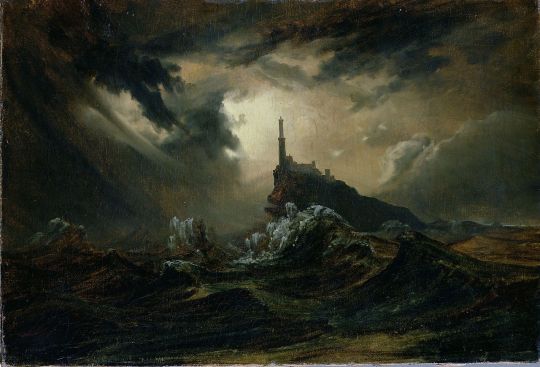
Stormy sea with Lighthouse by Carl Blechen (1826)
128 notes
·
View notes
Text
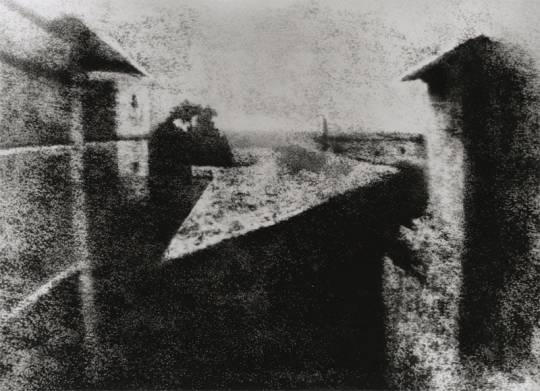

Rediscovered in 1952 by photo historians Helmut and Alison Gernsheim, the “First Photograph” was first depicted in this well-known reproduction that was retouched by Helmut Gernsheim prior to its international release. Joseph Nicéphore Niépce’s “View from the Window at Le Gras.” 1826 or 1827. Gernsheim Collection, Harry Ransom Center / The University of Texas at Austin.
The details are faint, it’s true, due not to fading but to Niépce’s underexposure of the plate.Interesting to think of an 8-hour exposure as being underexposed!
#first photo#Nicéphore Niépce#1826#View from the Window at Le Gras#black and white#Gernsheim Collection#historic#old#Le Gras#France
19 notes
·
View notes
Text
Vicente López, Head of a Woman, 1826

3 notes
·
View notes
Text
“Perhaps after thousands of years some wonderfully shrewd schoolmaster in a fearfully profound dissertation will prove beyond cavil, that Napoleon Bonaparte was identical with that other Titan who stole fire from the gods, and who for this trespass was chained to a solitary rock in the midst of the sea, as a prey to a vultue, which day by day gnawed away at his heart.”
— Heinrich Heine, Travel Pictures (1826)
#the way Heine was the realest one who ever#Heinrich Heine#Heine#napoleon#napoleonic era#napoleonic#napoleon bonaparte#first french empire#french empire#19th century#german romanticism#romanticism#german literature#literature#lit#Prometheus#Travel Pictures (1826)#1826#1820s#history#quote#quotes
21 notes
·
View notes
Text
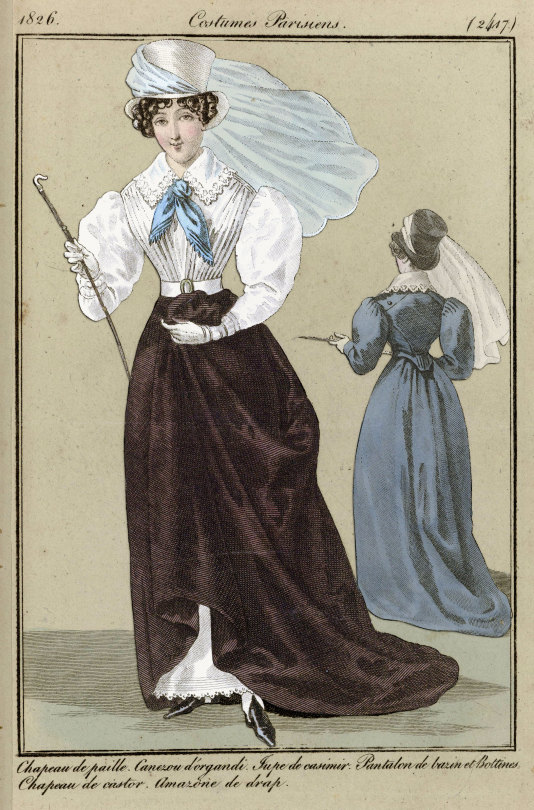
Journal des Dames et des Modes, Costumes Parisiens, 25 juin 1826, (2417): Chapeau de paille. Canezou d'organdi. Jupe de casimir. Pantalon de bazin et Bottines. Chapeau de castor. Amazone de drap. Collection of the Rijksmuseum, Netherlands
Woman in organdy 'canezou' with gigot sleeves on a 'casimir' skirt with train. Underskirt and long pants from 'Bazin'. On the head a high straw hat with veil. Further accessories: scarf tied around the neck, belt with buckle, gloves, whip, boots. In the background a woman, seen from the back, in an Amazon costume (riding costume) made of cloth. On the head a top hat of 'castor' with veil. The print is part of the fashion magazine Journal des Dames et des Modes, published by Pierre de la Mésangère, Paris, 1797-1839.
#Journal des Dames et des Modes#19th century#1820s#1826#on this day#June 25#periodical#fashion#fashion plate#color#description#Mésangère#dress#rijksmuseum#riding habit#habit#Amazone#gigot
78 notes
·
View notes
Text
24 Days of La Fayette - Day 4
This portrait is again one of my favourite pieces of La Fayette (I must be careful to save at least one more favourite of mine for the 24th …) although it employs a stylistic device that I do not necessarily like when it comes to La Fayette. But more on that later.
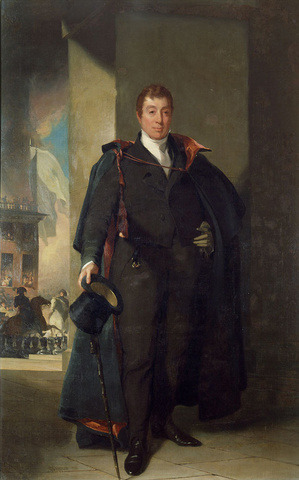
Portraits in Revolution, Works by Thomas Sully, Marquis de La Fayette, 1825-1826 (12/04/2023).
This is a portrait of La Fayette by American artist Thomas Sully. He first painted an oil study as a preparation for the full length portrait seen above. As you can see, the study does not look particularly like the painting from Scheffer (Day 2). That is because La Fayette actually sat for Sully – sort of. La Fayette was received on September 8, 1824, just two days after his 67th birthday, in the Independence Hall in Philadelphia. It apparently was quite the evening. The city officials later approached La Fayette and asked for his consent to commission a painting of him by Thomas Sully. La Fayette agreed, but his busy schedule demanded that Sully followed him to Washington where the study was painted. The actual painting was finished in 1826 in Philadelphia – La Fayette left America in 1825, never to return and so he never saw this painting with his own eyes.
A short compositional overview of the work:
In the study, Lafayette stands on the north apron of Independence Square before a pillar of an arch, designed by architect William Strickland after the triumphal arch of Septimus Severus in the Roman Forum. The prop was covered with allegorical figures and statues which Sully recorded in a pen and wash sketch, but which he eliminated from the study and final portrait, calling attention instead to his subject. Through the arch, the viewer sees Lafayette’s admirers crowding the windows and roof of Independence Hall. Flags billow from poles along the balustrade while mounted and standing members of one of his escort troops, the Washington Grays, are in the mid ground.
Wearing a black suit with white shirt and collar and a black cape lined in red satin held loosely in place by red and gold tassels, Lafayette gazes into the distance, not at the viewer. Sully has given the Marquis a neo-classical oval face and his toupee of close-cropped hair a reddish cast. His proper left arm beneath the cape is akimbo adding mass and strength to his body and his gloved hand holds his right glove that he removed to hold a top hat and cane. The Marquis’ face is unlined, belying the effects of time and gravity.
Lafayette College, Lafayette College Art Galleries, Thomas Sully, Lafayette, study for 1824-1826 (12/04/2023).
As you can see, there is a lot of symbolism and Sully clearly had a very clear picture in mind that he want to paint of La Fayette. The portrait is extremely flattering – La Fayette does not look like a 67 year old that had been in prison for many years, that had seen war and revolution, that had been in exile, lost his wife and a child. He looks fresher, younger and more energetic. Perhaps the artistic liberty taken here is best explained like this:
Sully portrays Lafayette not as he appeared on that September day, but as he might appear in Elysium with his fellow warriors.
Lafayette College, Lafayette College Art Galleries, Thomas Sully, Lafayette, study for 1824-1826 (12/04/2023).
I normally have objection to putting people on pedestals. La Fayette was not young anymore, he was ageing, and I think he earned himself the right to look old. He lived through a great many monumental changes and events; he survived what many others had not survived – there is no shame in being or looking old! But I also have to say that I do mind so much with Sully’s portrait as I normally do.
There is one other thing that always makes me smile when looking at this painting – I can name three paintings from the top of my head where La Fayette wears the same or a very similar outfit.
#24 days of la fayette#marquis de lafayette#la fayette#french history#american history#history#art#thomas sully#1824#1826#tour of 1824/1825#triumphant tour#lafayette college
19 notes
·
View notes
Photo

Atlas of Ancient Geography: Macedonia, Thessalia and Epirus with Tracia. By Henry S. Tanner, 1826.
52 notes
·
View notes
Text

The Lantern Ghost, Iwa, Katsushika Hokusai, 1826-37
#the lantern ghost iwa#the lantern ghost#katsushika hokusai#hokusai#1826#1837#1820s#1830s#1800s#19th century#woodblock print#print#woodblock#ukiyoe#ukiyo-e#ukiyo e#art
28 notes
·
View notes